In this episode, Matt Tomko, Chief Revenue Officer (CRO) of Happy Money. The discussion covers Tomko's 30-year career in consumer finance and the business model and mission of Happy Money, a financial technology (FinTech) company.
1. Matt Tomko's Career Path
Tomko began his career 30 years ago in credit risk at MBNA (now Bank of America). He then moved into student lending at Sallie Mae and later personal loans at Springleaf Financial (which became OneMain Financial). He joined Happy Money to help its CEO, a former colleague, "rebuild" and transform the company.
2. The Happy Money Business Model
Happy Money is a FinTech, not a bank. It does not hold the loans on its own books. Its primary product is the "Payoff Loan," which allows consumers to consolidate high-interest credit card debt into a single, lower-rate personal loan.
The company operates as a turnkey solution for its funding partners:
- What Happy Money does: It handles all marketing, credit underwriting (using its proprietary "Hive" platform), and loan servicing.
- Who funds the loans: The loans are funded by a diversified group of partners, including credit unions, banks, and credit funds.
- How Happy Money makes money: It charges an origination fee to the consumer and sells the loans at a premium to its funding partners.
3. The "Win-Win-Win" Strategy
Tomko describes their model as a "win-win-win":
- The Consumer (Win): Gets a more affordable loan to pay off debt faster (the average loan life is 19 months).
- The Funding Partner (Win): Receives a high-quality, fully serviced loan (an asset). For credit unions, this also provides access to a younger demographic (Happy Money's average customer is 40) whom they can then cross-sell other products.
- Happy Money (Win): Is paid for providing the technology, underwriting, and servicing.
4. The "Happy Money Credit Check-in" Study
Happy Money recently commissioned a survey of 2,000 Americans about their debt. The key findings were:
- Stress: 42% of people are worried about their debt.
- Health Impact: Of those worried, 40% said it impacts their mental health, and one-third said they are losing sleep over it.
- The Opportunity: Only 8% of those worried about debt had used a consolidation loan, indicating a significant lack of awareness about available solutions.
5. Future Goals
Tomko states the immediate goal is to perfect the core personal loan product and achieve profitability. The long-term vision includes using their platform to expand into other lending products, such as home equity loans. He emphasized that the path forward relies on partnerships with established financial institutions, allowing Happy Money to serve as their specialized "personal lending arm."
Key takeaways
Why is the consolidation market still this small when the debt problem keeps growing?
There's $1.2 trillion in credit card debt sitting on American balance sheets. Happy Money commissioned a third-party survey of 2,000+ borrowers and found that 42% are worried about their debt payments. One-third report losing sleep over it. Another 40% say it's affecting their mental health.
Yet only 8% of those stressed borrowers have tried debt consolidation.
Why aren't more financial institutions offering this product?
According to Matt, debt consolidation isn't a core focus for most banks and credit unions. They're working on other asset classes. The personal loan market for debt payoff requires specific underwriting models, technology infrastructure, and operational expertise that many institutions don't want to build in-house.
That creates a partnership opportunity. Fintechs like Happy Money invest in the technology, live in the product daily, and can white-label or co-brand with established institutions that have customer relationships and distribution but lack the product infrastructure. The institutions get access to borrowers who need help. The fintech gets scale and reach. The consumer gets a consolidation option they didn't know existed.
What's the real barrier to adoption?
Matt points to three issues.
First, lack of education. Most borrowers don't know consolidation loans exist or how they work.
Second, poor partnerships. If a lender is overcharging for risk, hiding terms, or setting up customers to fail, the product doesn't help anyone. Regulatory scrutiny matters here. Customers need to go in with eyes open and walk out in better shape than they started.
Third, market fragmentation. Happy Money isn't a household brand. Without partnerships, smaller lenders can't compete for awareness against the big banks that dominate consumer finance.
What did Matt learn from 30 years of consumer lending cycles?
He's seen boom periods and he's managed through the 2008-2009 financial crisis in a senior role.
His take: risk management knowledge is foundational, but revenue and growth experience rounds out the skill set. Moving from credit risk into business development and funding taught him how to think about capital partnerships, market timing, and scaling responsibly.
His last startup before Happy Money didn't time the funding markets well and had to wind down, selling off components of the business. That experience informs his current approach at Happy Money, which prioritizes measured scaling, diversified capital, and asset quality over aggressive growth.
What's next for the personal loan category?
Matt sees home equity as a logical extension down the road, but only after Happy Money executes on its current mission. The focus now is getting more borrowers into consolidation products, expanding partnerships with financial institutions, and using better data and personalization to predict when customers need the product and would actually benefit from it.
The survey data suggests the opportunity is massive. The execution challenge is distribution, education, and ensuring every loan actually helps the borrower on the other side.
Who should listen to this episode?
- Consumer lenders building or buying loan portfolios.
- Capital providers evaluating personal loan assets.
- Fintech operators trying to understand partnership models with traditional financial institutions.
- Product leaders working on debt solutions.
- Anyone trying to figure out why a $1.2 trillion problem still has single-digit penetration in the solution market.
Interview with Matt Tomko - Happy Money CRO
Jordan: Hello and welcome everyone. I'm here with Matt Tomko. He's the Chief Revenue Officer or CRO of Happy Money. But Matt, I appreciate you coming on today. I'm really excited to hear more about your story.
Matt Tomko: Great. Thanks for having me. Excited to be here.
Jordan: Matt, just to start off, you wanna give us some background on yourself and kind of your, you've been in finance, we talked about a little bit before this, but you've been in a lot of different finance things over the past 10, 15 years. Step me back and kind of describe your journey from now until Happy Money and what made you decide to go to Happy Money?
Matt Tomko: Yeah. I mean, look, 10 to 15 is making me sound a lot younger than I really am. 30 years ago, started in financial services, or 30-ish years ago, in credit cards, MBNA, which became part of Bank of America. I spent about 11 years combined across those two organizations and primarily in credit risk capacities. So collections, credit underwriting, credit oversight, loss forecasting, all those sorts of roles. Really a good foundation for any career in financial services and understanding the basics of the risk side of the business.
After a few years there, Bank of America was a great organization, wanted to try something different, got recruited to join Sallie Mae. So I did student lending for about five years. And then I got tapped on the shoulder again and moved into personal loans. So, which was a really fun part of my career. I joined SpringLeaf Financial, which is not a household name, as that was spinning out from American General Finance. And Fortress Private Equity had bought that right after the financial downturn. But that was super fun. We took SpringLeaf public, we bought a few portfolios, and then we ultimately acquired our largest competitor from Citigroup, which was known as OneMain Financial. So that business is now OneMain on the personal loan side, one of the largest non-bank lenders in the country.
And then went to the startup world down in Austin, Texas for a few years, tried a few different things. Credit cards primarily. Was part of a group that when I founded it, or when I helped found it, was called Credit Shop. That just actually was acquired by Lennar recently. That was known as Mercury Financial, about a three and a half billion dollar book. And yeah, that's when I started moving more into the funding and the revenue side of the business, still leveraging a lot of my risk management knowledge, but it was more in the business development and growth sides of the house, which helped to round it out.
So, which, you know, recently led me to Happy Money. The last startup that I had done, you know, we didn't time the funding markets incredibly well, so ultimately had to wind that down and ultimately sell off components of that business. But, you know, as that was going on and was looking for the next thing to do, I had known Matt Terry, who's the CEO of Happy Money, had just taken the job at Happy Money and he and I had known each other from those MBNA days that I talked about, and he said, "Hey, we're building this company that's called Happy Money, right? And the nature of the name trying to create a better way, more responsible way of lending, right? Can we help people pay off credit card debt faster, have a better relationship with their money, right size their personal balance sheets?" It's a great mission company that's been around for a few years, has done 350,000 plus loans, six and a half billion dollars, but you know, needs a bit of transformation, a bit of a rebuild.
You know, the company historically has been funded by partnering with credit unions and solely credit unions to sell those loans on a forward flow basis. Which is great until, you know, interest rate environments change. Credit unions don't have as much capital to deploy. If that's your sole source of funding, you really start to get constrained and it can kind of limit growth and you end up in a little bit of a burn mode that you wouldn't expect. So, as Matt and I came into the business, part of our sort of rebuild, after Happy Money's been through kind of several different cycles of ownership, et cetera, is to really just build it on the foundation of the fundamentals. Make really good loans, really solid loans on really solid technology, deliver a great experience to the consumer, deliver really solid assets to our capital partners.
And that's what we've been doing for the last year. So we went out and we diversified capital. So we don't rely solely on credit unions. They're still incredibly important partners for us. Really efficient partners in the cost of funds that they can deliver and the type of product that, by extension, we can offer to our members or our customers. But we've expanded to banks and credit funds as well to have different sources of capital. And, you know, we've really focused on the fundamentals of our business and our technology to make sure that, you know, we are scaling in a very measured and responsible way.
Jordan: There's a lot of awesome stuff in there. I'm gonna step back through some of it and ask some questions. To begin with, you chose to go into financing, like not just finance, but financing. I'm curious, you know, you newly outta college. I understand. How much was a choice and how much was like, "Hey, this is a good payday." I don't mean it as—
Matt Tomko: No, I get it. Like, so I'll be very honest. I went to undergrad as pre-med, was gonna be in medical school. I graduated a little bit early off sequence and had medical school, took the MCATs, had med school acceptances, all that stuff, deferred a lot of the work that I was doing around med school because I ended up getting a job with my hometown company. I grew up outside of Philadelphia, ran the line between Philadelphia or Pennsylvania and Delaware. And I had neighbors who worked for this company called MBNA. And I was home from school. Med school wasn't gonna start until the next fall. I'm like, I sort of need a job. I'd done some internships, I did collecting on the phones and stuff like that. And I got into the data and analysis side as essentially a junior level employee at this credit card company. And I taught myself how to write SAS and SQL code so I could get to data. And I figured out very early in my career, if you have access to the data and you understand how to interpret that data, you become pretty powerful in terms of your contribution.
So I really liked what I was doing. They put me into a management training program. I really was intrigued by all of it. My minor in school was also economics, so it was kind of, it wasn't out of nowhere, scratching that itch on the economic side of the house. And, yeah, it really ended up just liking the company, the people I was working with. MBNA had a really unique culture. I could go, I could talk your ear off about what MBNA was back in the late nineties, early two thousands. But it was a good foundation around consumer lending and around finance in general. The finance at the consumer level. And it became a passion. Like I got really good at the risk side of the business and really, like I said, enjoyed the people, enjoyed the products, and watched a lot of growth in the industry.
Really up until, you know, 2008, 2009, that was the first kind of meaningful cycle that I was in as I was in a more senior management position that we had to manage through. But, yeah, it's been a lot of fun. I haven't looked back, you know, I'm still wildly intrigued by medicine.
Jordan: And I was gonna say maybe later, you know, maybe later in the line you can still go back, you know?
Matt Tomko: Yeah. Who knows? So it's still, I still find it highly intriguing, but yeah, no regrets in working in finance and consumer lending and, yeah, I'd like to think we've made a positive impact in a lot of other ways. You know, obviously it's pretty linear if you look at the impact that a physician has on someone's life. It's a little more roundabout from a lending perspective, but I'd like to think that, you know, we've enabled people to achieve their dreams through their finances in positive ways as well.
Jordan: Yeah. So if, I mean, MBNA—is that, I say that right? MBNA?
Matt Tomko: Yeah. MBNA.
Jordan: You worked with them a couple years. You went from credit cards to student loans, and then over to personal loans, all in the consumer division, but like three different, very different products. All financing, but again, three very different products. Now kind of compare and contrast them. I'm kind of curious. And now you're still in consumer financing, so they're kinda related, but tell me more.
Matt Tomko: The fundamentals are all the same, like the risk fundamentals for sure. The risk fundamentals: you're lending money with the expectation that it will be repaid, right? So if you get that equation right, like that is the core of everything that you're gonna do. Like a lending business does not work. I don't care how great your product is, how great your platform is, how great your service is. If you're lending money to people who can't afford to pay you back, your business will fail. Right? You're not gonna be able to fund it and, you know, ultimately it's gonna be a failure. So that is the fundamental—it's finding the right model, the right people, being very disciplined about credit. And then it's building all the things on top of that.
So if you're talking about a credit card or a student loan or personal loans, it's all very similar. Actually, student loans was the one where I probably lost the most sleep at night about what I was doing. Just the guardrails. I think students are borrowing a lot of money and it's less an indictment of the student loan industry, 'cause I think it does play a critical role, potentially more of an indictment of the cost of higher education and making sure students are going in eyes wide open with the expectation of sort of, you know, how much is my education gonna cost? The importance of finishing your education, getting that degree, 'cause the performance on loans goes up substantially. Obviously, if the person finishes their degree, they can have that utility of that degree to help create a career in earnings.
But yeah, I think when you're lending to kids, you know, and I can say this as a parent who's got a kid in college right now, I think the transparency of information and the realistic expectations of, okay, how much am I gonna earn my first couple years outta school? How much are these loan payments going to be? Like you look at kids who are going to trade schools, like culinary schools or video game development. And they're still, maybe they're associates programs, but some of 'em are 70, $80,000 a year that they're financing. And it's like, okay, you know, becoming the developer of the next, you know, Epic Games to use a local Rally company here, that's like making it in professional sports. Like, your odds are you're in some other development role that's not gonna create that sort of income that supports the type of loan you're taking out. So that was a struggle. Honestly, student lending was an interesting business for me. And I think, again, there's a lot of good. It plays a crucial role in the finance network, but I do think it can be difficult when you look at the situations that some students get themselves into in terms of overall education costs and how much they're financing.
Jordan: Yeah, no, I have strong opinions about all this and yeah, the hard thing I have—I have a 15-year-old, they're coming up soon. We talk a lot about like, yeah, that decision of like, when is it? At the cost it is, right? It doesn't make sense. Some degrees even. You gotta make a choice to say, okay, this degree maybe is not worth, you're just not gonna make your money back unless you're gonna pay for this with cash somehow. You're not gonna make your money back going and getting a, you know, $50,000 a year loan for a degree in kindergarten teaching. That's just not. It's not gonna happen. But that happens, right? That's probably what you're talking about.
Matt Tomko: Happens a lot. Yeah. I mean, and look, teaching's probably one of the better places for students to end up to have some stability. Like I've seen much, much different circumstances with much higher levels of educational debt.
Jordan: So then personal loans. Now the difference between personal loans and credit card, that seems somewhat a little more similar there, right?
Matt Tomko: Yeah, they are. I mean, our business today, Happy Money, we're consolidating credit card debt, right? So you're really making similar decisions. Like money, it's fungible, right? So whatever you're applying the money to. But our focus is on consolidation. So a customer has accumulated debt on credit cards for any number of reasons, right? Some of which completely altruistic. You're trying to finance anything from your student's education to medical care, to improvements on your home, whatever the case may be. You find yourself in a situation that you're carrying a little bit more debt than you want to otherwise, and credit cards aren't built for that, right? Credit cards are built for convenience and their rates are going to be higher as a result of that convenience. They're not necessarily a financing tool or a long-term financing tool, but customers find themselves in that situation from time to time, and it's a strain on your personal balance sheet. Like the interest rates, the minimum payments, all of that, the length of time, if you're making minimum payments that you have that debt is stressful, you know, for lack of a better word.
And I'll talk a little bit about a study that we did in a bit, but yeah, our goal is to provide customers with a vehicle where they can get outta that debt faster. Right? You have a single monthly payment, reduce the interest rate versus what you're paying on your credit cards and over the course, you know, the weighted average life of one of our loans is about 19 months. So over the course of really a couple years, you find yourself in a much better situation where you've eliminated that debt, it's cost you less in terms of interest overall. And we do that again by, you know, marrying our consumers with, you know, the appropriate credit union or credit fund or bank who's gonna give them the most competitive rate on that loan to put them into that better situation.
Jordan: So now I'm almost sure I know the answer to this, but would you classify Happy Money as a FinTech?
Matt Tomko: Yes. So yes, definitely. Right, because you're not holding the notes, but you're brokering deals.
Jordan: That's exactly right.
Matt Tomko: So we're not a bank. We don't fund the loans ourselves. We act as the turnkey solution to provide assets to our credit partners, our funding partners. So we will do all the marketing. So we are an omnichannel marketer. We're out there certainly with digital affiliates. We're out there with our own digital footprint, organic paid, and we're doing a lot of direct mail right now. Like we have reentered the direct mail space as much as that's the old dinosaur and that doesn't feel very fintechy.
Jordan: It's still good. I mean, now it's like almost better because it's like you got, you skip it and then go back and it's like more surprising to get mail. So I totally understand.
Matt Tomko: Yeah. Maybe it flips it on its head. But the other thing about mail is you can go out to your bureau partners and you can do a pre-qual offer of credit 'cause I know who I'm approaching through the mailbox with specific address, specific identity. Whereas if you're more just open source or branded types of channels, you don't know who the responder is necessarily, and there's an extra couple steps to make sure that, you know, that consumer meets sort of your credit box and that you have an offer for them so you can do some instant pre-quals and things like that. The luxury of mail is, I can send, you know, Jordan a mail piece and say you qualify. You know, it's gonna be for me and know my credit. You qualify for a $40,000 loan. Here's what your rate should be. Here's your minimum payment and this is exactly what that looks like. Versus having to force you to go shop for it on a marketplace or other affiliates. But yeah, we're very much a FinTech, you know, we do the marketing, we do the underwriting.
We have our own platform, our platform's called Hive, powered by, you know, several different technologies to try to be as efficient and frictionless and self-serve as possible to get the customer through, you know, a pretty substantial application. But we get them through pretty quickly. And then we service the loans as well. So once the loan has been underwritten, we've funded it through one of our credit fund or credit union partners, and then we do all the servicing as well. So everything from calling to check on a payment to ultimately collections and recovery in the backend. So we function like a full service financial institution, only difference being we don't hold the asset. Generally, we charge an origination fee on the loan. We charge a premium on the forward flow sale to our credit partners. They get an asset with a really nice return, customer gets a really good rate because they've been married with, you know, a funding partner that's very efficient. And then, you know, we get paid for the matchmaking process, the underwriting, the servicing, bringing our technology to bear and our credit expertise.
Jordan: So your website's gorgeous, right? Happy Money looks amazing. They do. You've done a really good job with it. How many of your, I say customers, right? I dunno if you call 'em customers, they are right. The consumers that would be your customer.
Matt Tomko: Yeah, they're customers. I interchange between customers and members quite a bit. And the reason I say members is we create memberships for certain customers. If they're funded by our credit union partners, they become members of that credit union because they have to be able to access it. That makes sense. Right. But it's sort of nice. Credit unions offer some really great products. It's another kind of financial connection. And, you know, when credit unions are doing things the right way, and several of our partners do, they activate those members and get them into other DDA products, mortgages, auto, all the things that, you know, credit unions can provide a really nice service.
Jordan: Yeah. So do they log in? How many, how often are they coming into your portal? Obviously they, for the beginning part, that's the most, right? Did they go back in there to check, probably update payment method, that kind of thing. But beyond that, are they logging in regularly?
Matt Tomko: No, not a lot. I mean, I would say we've even moved away from, you know, really highlighting our standalone app, because the product is designed to be pretty automated and low touch. I'd say that once you get it done, you're like, you can walk away and just have it go. In a perfect world, you set it and forget it. And then continue to watch the balance. And then when you've got additional capital, additional, you know, room in your balance sheet, and you go look at that balance on your consolidation loan from Happy Money, the payoff loan is our brand on our loan. When your payoff loan gets to a level that you can afford to pay it off, pay it off and you're done, right? But otherwise, leave it on autopay, set it and forget it. That's the perfect environment for us.
But yeah, our site, like our branding, if anyone wants to check it out, it's a little bit whimsy. It's, I call it almost Dr. Seussical. And that's sort of by design. Again, a lot of our history is pairing customers with credit unions. The credit union member, or average credit union member has gotten older and older, and it's that bricks and mortar, the traditional idea of a community credit union. A younger generation is doing more and more with fintechs like us. So we're playing into that a little bit. We're trying to be very lighthearted, very approachable, very easy to deal with, and we attract a little bit of younger customer as a result. So the average age of our borrower is about 40 years old, which is substantially lower than your average credit union customer. Again, that's a service that we can provide and bring members to credit unions who wouldn't fit the normal sort of, you know, credit union mold or the traditional—
Jordan: Yeah, because they don't really wanna walk in as much. They prefer more online. Now would you say Happy Money when you're interacting—these relationships you have, you have it with, like you said, you just started going forward with banks. You already have this relationship with credit unions. And it's just so you can offer multiple products, but it's kind of like a win-win. Obviously this is an amazing scenario for everyone. Right. You have a win-win for the consumer or the customer, the member. But also the credit unions, like you said, you're also, you know, the ones that are doing it right. They didn't, you know, I say upsell really, but I don't mean as cheap as that, but you know what I'm saying. They're offering value in other ways too. Like, "Hey, by the way, you're here already. We can help you out with a home loan, a mortgage, a car loan, all these other things." It's beneficial to the consumer and the credit union.
Matt Tomko: A hundred percent. That's the way, that's the way that it should be a win-win-win situation. So the flywheel, that's when it's working. Ideally, that's gonna be amazing for everyone. That's right. Now I'll be very honest. I think where we have a lot of opportunity as an organization is where can Happy Money within the relationship—you know, we hand them over to the credit union. We will promote the credit union's products in their interactions with us. We'll do that cross selling. We will use our credit union's brands if they want us to, to do kind of initial outreach and marketing. If you're a partner credit union, you're buying assets from us. We will do things to try to bring you members in your footprint. We will try to activate members that may not have a personal loan, but need one. Because personal loan's one of those products that a credit union or a bank, it's a little bit of an afterthought. It's not one of your lead products. It's not like the card, it's not the big money mortgage or auto loan or, you know, commercial lending. But it's a product that, you know, it needs a lot of attention. It needs to be done right. So we play that role. We become that personal lending arm for some of our partner institutions.
But where we gotta do a better job is where does Happy Money—where can we connect into the relationship further? Right? Our goal is to get someone into one of our payoff loans, be done. Like, get out of debt, use your cards responsibly, be happy about your money. That is a perfect world. That obviously is not what makes me the most money, but that's our goal, right? That's our mission or our vision. But that's not real life. Like we know that customers will reaccumulate debt. We should be offering either extensions or, you know, refinances on existing loans. Philosophically, that hasn't been where we've been, but I think we're hearing that need and that's something we move into. We should be able to use our platform to generate other products too. Home equity is a great one, you know. Do we get there in the short term? Not that—we're running outta time this year, but, you know, our roadmap is very much about being very good at personal loan and our core product, and being a very profitable company, delivering great assets to our partners on the personal loan. You know, once we feel like we have that box completely checked and we're getting there, then we'll look at rounding out customer relationships.
Lending products is where we'll play. I don't see us becoming a bank anytime soon. But we can facilitate other types of lending vehicles. Like I said, home equity seems like a really logical one at some point for us. But that's gonna be down the road a little bit after we continue on the mission that we're on right now.
Jordan: Yeah. So you mentioned earlier a study that you've done recently. I wanna hear more about it. I know we talked about this before, or I talked about it with Laura, but yeah, I wanna hear more about it and really what do you feel like the impact is of it?
Matt Tomko: Yeah, we, again, we've got this mission to help folks get outta debt. So we commissioned a third party survey. We called it the Happy Money Credit Check-in. We got over 2000 responders kind of, really cross section of the average American, you know. Like across different states, demographics, backgrounds, and asked a bunch of questions about how they viewed debt. And you know, what we heard was 42% of people were worried about their debt and the payments that they have to make. A lot of them, a third, are listing paying down their debt as one of their top goals. And then we asked what they had done about it and you know, only a small percentage, about 8% have consolidated loans with a company like ours.
So it tells me that, whether it's us or our partners, big institutions, yeah, there's a lot of opportunity there. We gotta get the word out that there are ways that you can address your debt. And it's something that's really taking a toll on people, which I don't think we realize. Of the people that 42% that said that they, you know, have debt that they're worried about payments, you know, 40% of them say, "Look, it's impacting my mental health." A third of people told us it's impacting their sleep. So it's real, right? It's not just this abstract, you know, "I've got too much debt. How do I think about it?" No, it causes stress, it causes sleep loss, it causes, you know, relationship problems. We know, and you hear that all the time, so.
While we didn't hear anything shocking, right, because the amount of debt that's out there, there's a lot of people who have it. There's 1.2 trillion, or I think that number's been going up, 1.2 trillion plus of credit card debt. There's, you know, 330 million Americans with credit files or whatever. If you do that math, that's a lot of debt per person. Everyone's got some. But yeah, what was surprising to us in this study was, yeah, the two things. One, how few people have really taken action to take care of their debt, whether it's a consolidation loan. A lot of people mentioned just trying to change their budgets or delaying major purchases, dipping into savings. And I think it speaks to the fact that there's a lack of education out there about kind of what the options are and how you can, how you can put your debt and your, and again, right size your personal balance sheet. But also the shocking number to me was the third of people who said they're losing sleep because of their debt. If they've got debt, it's like that's something that, you know, there should be—
Jordan: Unhealthy level obviously. Right? They're stressed about it on a daily basis.
Matt Tomko: That's right. Yep.
Jordan: Yeah. So you have this survey completed and you know, Matt, this is probably our final question, but I really appreciate your time, appreciate you coming on. But you have this survey. You see all this, you see this opportunity. What do you feel like is the best way? I mean, 8%, 42% of the people you said are stressed about it. A third are losing sleep. Now the 8%, is that of that 42% or is that 8% of the total?
Matt Tomko: 8% of the—it's eight of the 42. So it's, it's, you know, but still a substantial, you know, portion of it haven't done a lot about it.
Jordan: What are the next steps to help? I mean, 'cause the products you're offering, consolidation, these are—they're not, there's never bad. Right. They're almost always gonna be beneficial because you're gonna be able to make it consolidated. It's gonna be easier. Often you can get a better rate. So is it just getting the word out? Is that kind of the idea?
Matt Tomko: I think that's a lot of it. I think it's, and I think it's a few different things. I think it's getting the word out about the product. I think it's also partnering with institutions. 'Cause look, Happy Money, we're not a household brand and for us to compete on that level, we rely on our partnerships and we hold our, whether it's our credit union partners or credit fund partners in very high regard. They have brands, they have access to consumers, and we need to do a better job and do more to partner with them and other financial institutions, right, that are looking for solutions for their customers or their members to help them consolidate their debt. Like I said, this is not one of the core products that a lot of financial institutions or consumer lenders kind of focus on. They're working on other asset classes, so organizations like us that are fintechs, that have invested in technology, focus on this product, you know, live, eat, breathe, the consumer loan. We can be good partners and, you know, partnering with the larger established financial institutions, partnering with folks like us, I think can get to more customers and increase that reach.
I think a lot of it, you know, that's one piece of it. You know, obviously efficiency in marketing and there's a, you know, marketing technology with the advent of AI right now. The level of personalization, the level of data, the ability to predict when a customer's gonna have a need for a product and when it's gonna be beneficial for them, I think is crucial. But underlying all that, you gotta partner and you've gotta make sure the consumer's getting with the right type of lender. 'Cause you mentioned they're generally a good thing. They are. But if you've got a lender who's out charging for the risk, let's put it that way, or giving the customer a rate that doesn't make sense or putting in onerous terms or things that are not transparent, you know, from a regulatory standpoint, you know, the customer's gotta go in eyes wide open. The same thing we talked about when we discussed student loans, right? Same thing can happen with the consolidation loan. The customer needs to find success on the other side of it or it's not good for anybody. So it has to be an affordable loan. Well underwritten with the right type of partner, with the right type of funding partners, to really make it successful at that three-way win between the institution, the FinTech provider, the partner, and then ultimately the consumer.
Jordan: Yeah. Well, Matt, like I said once again, I really appreciate your time and thanks you so much.
Matt Tomko: Thank you. Really enjoyed it, Jordan.






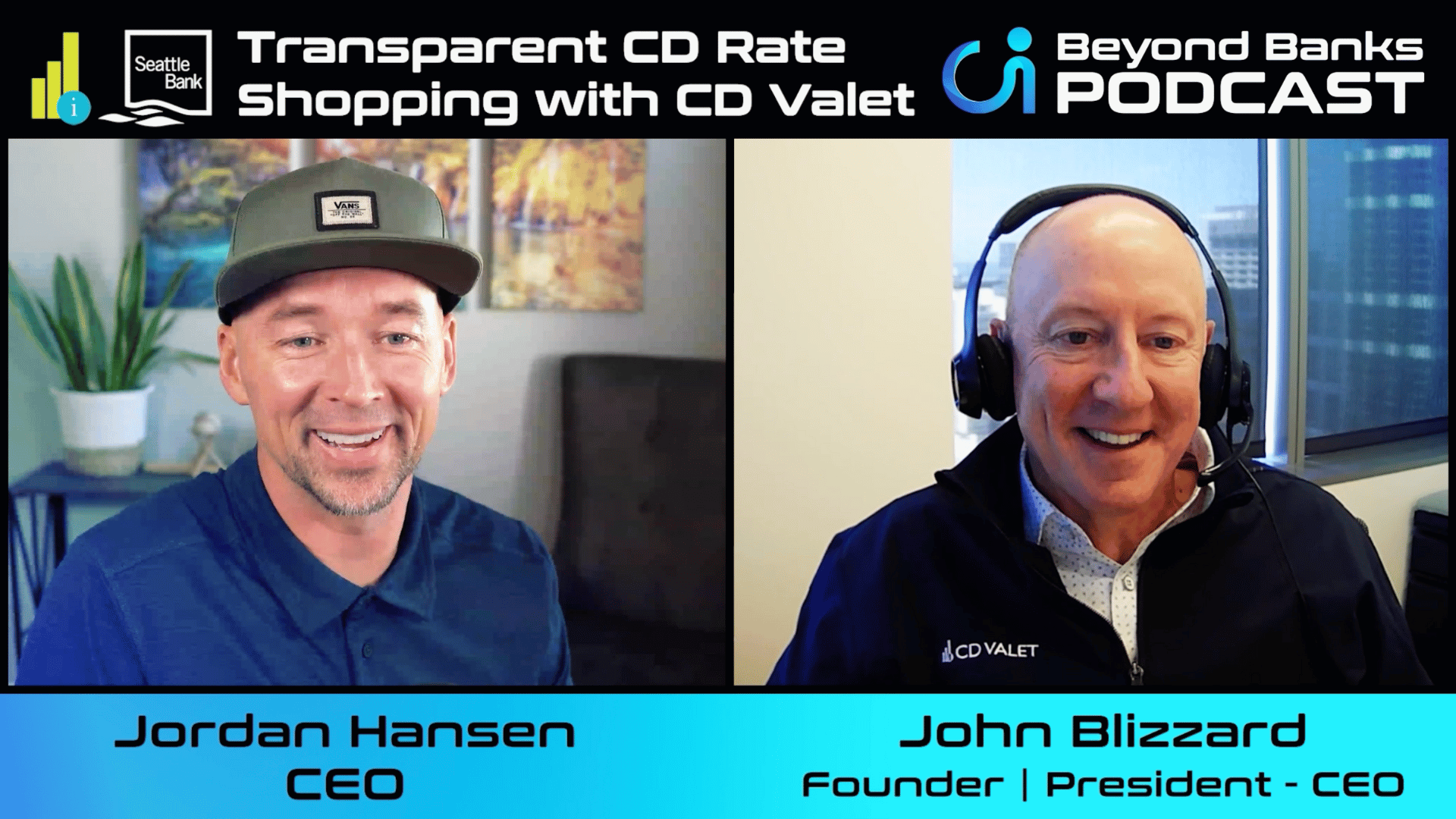




.png)
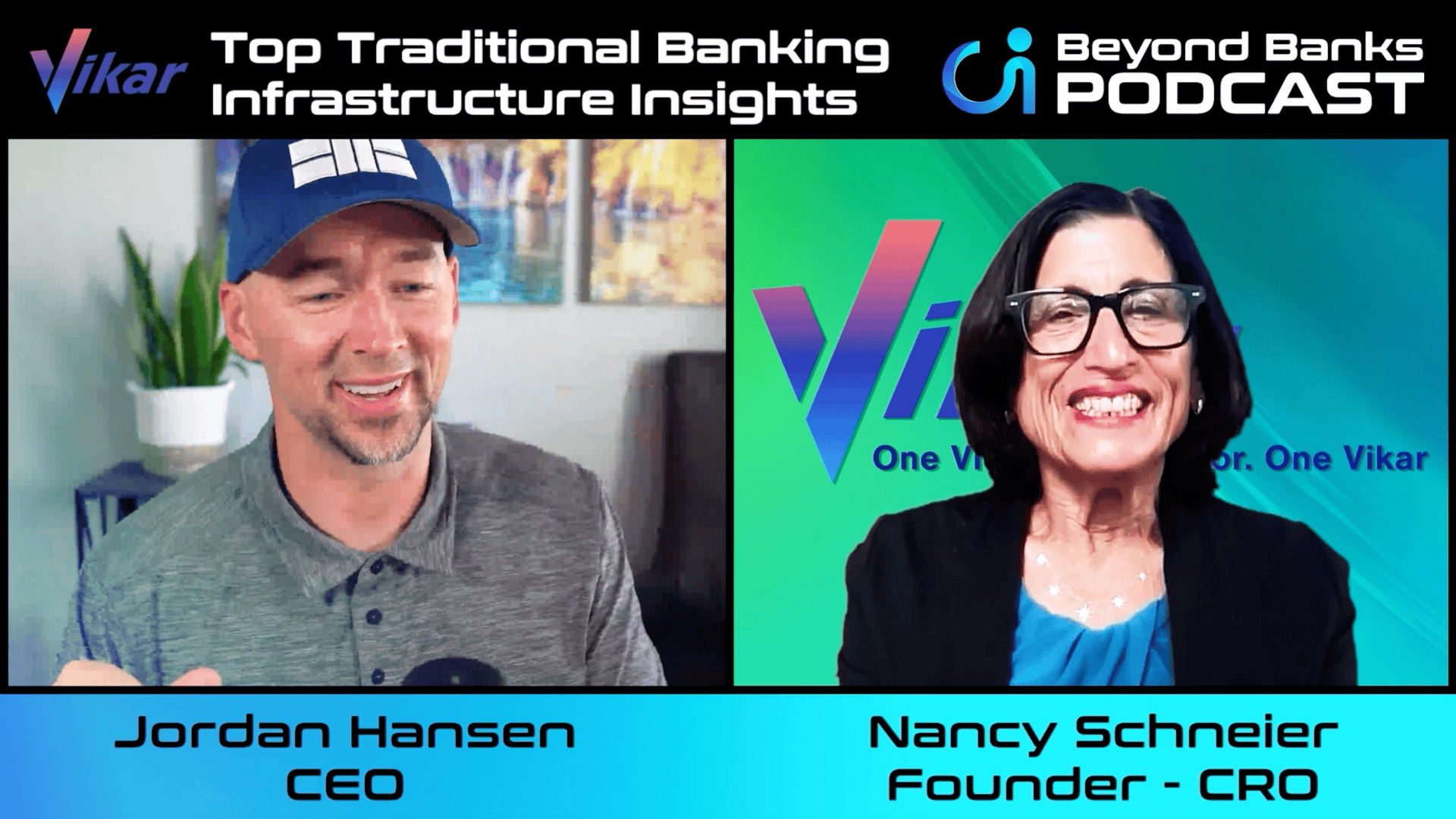
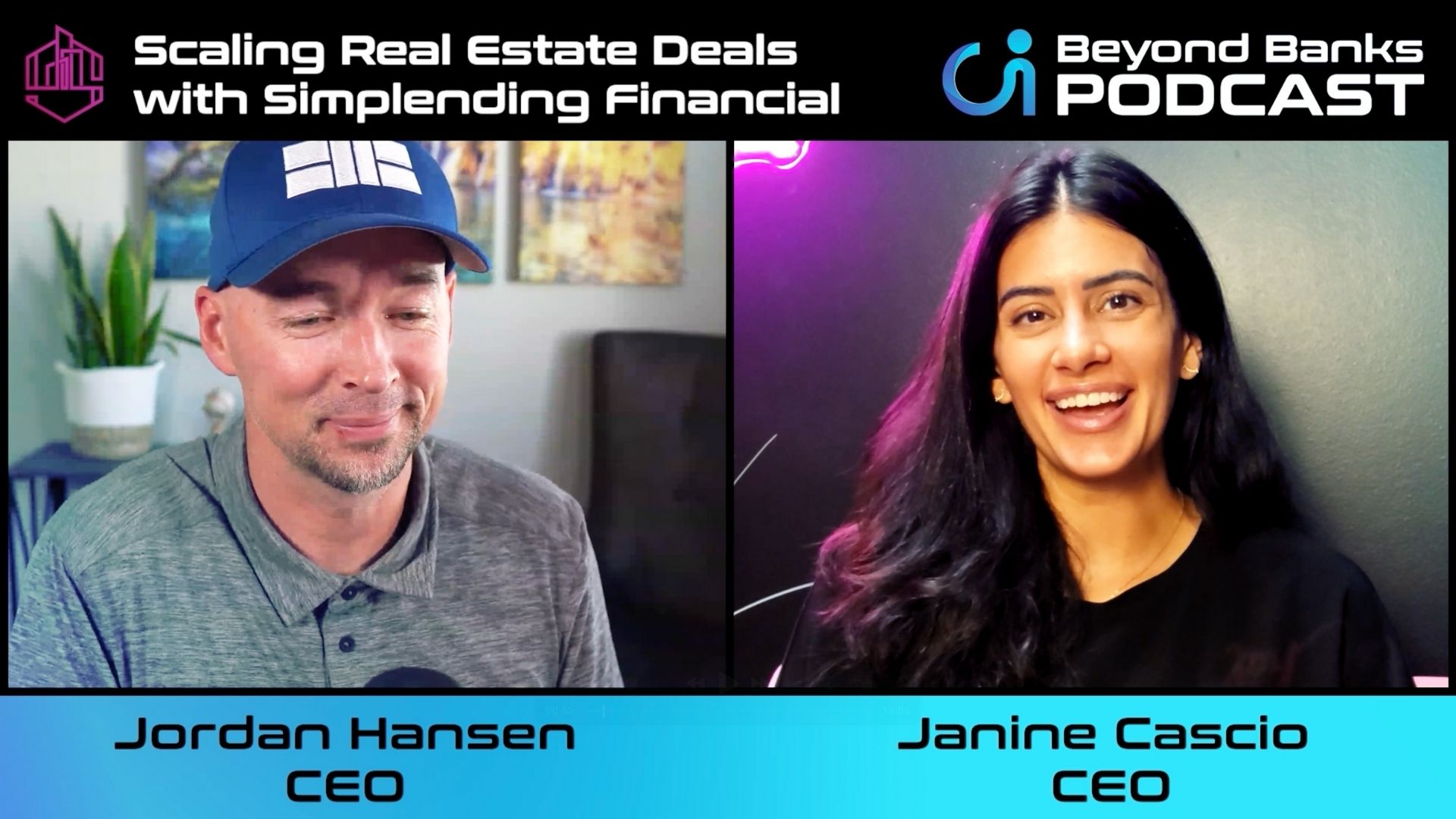
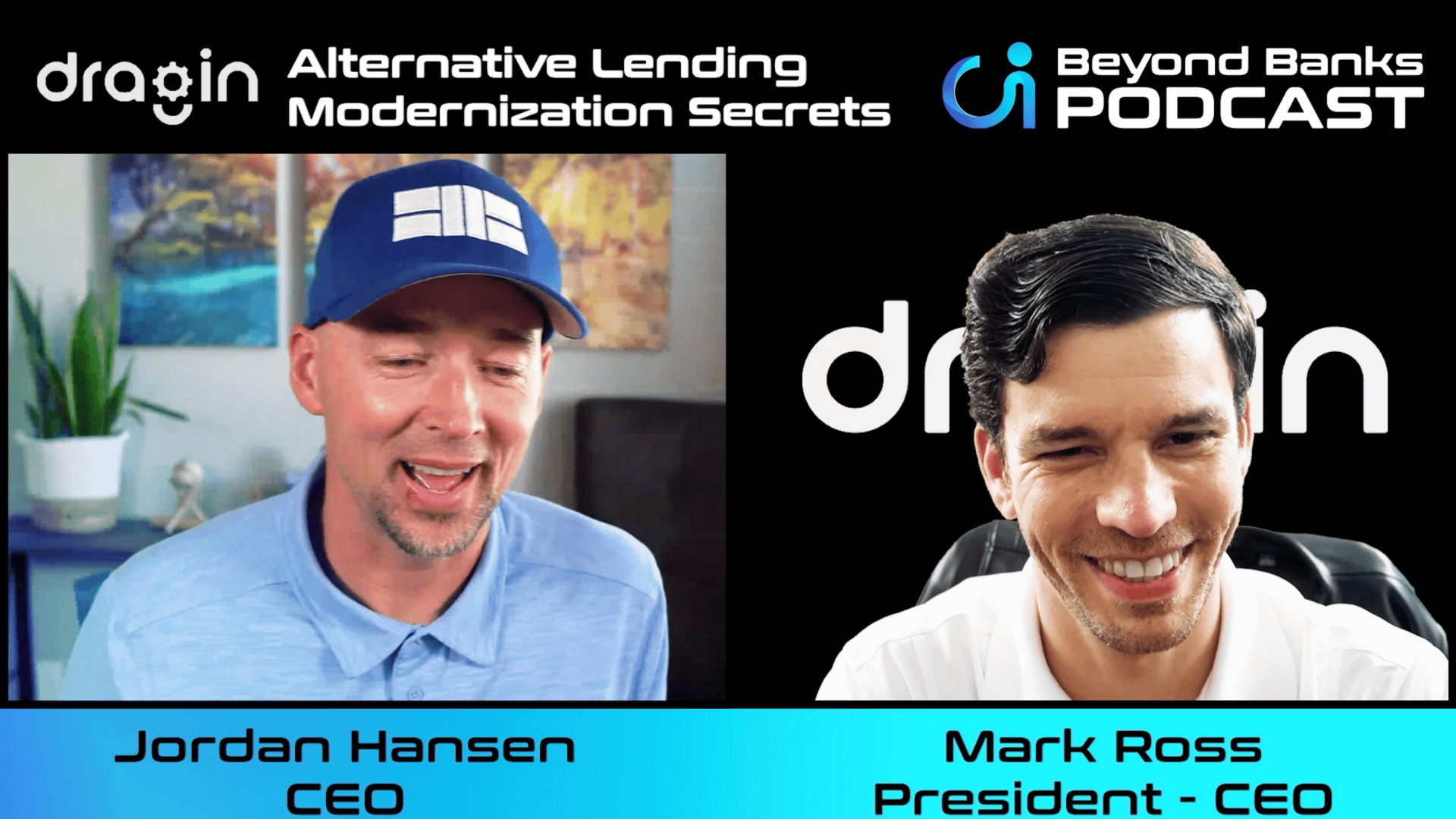

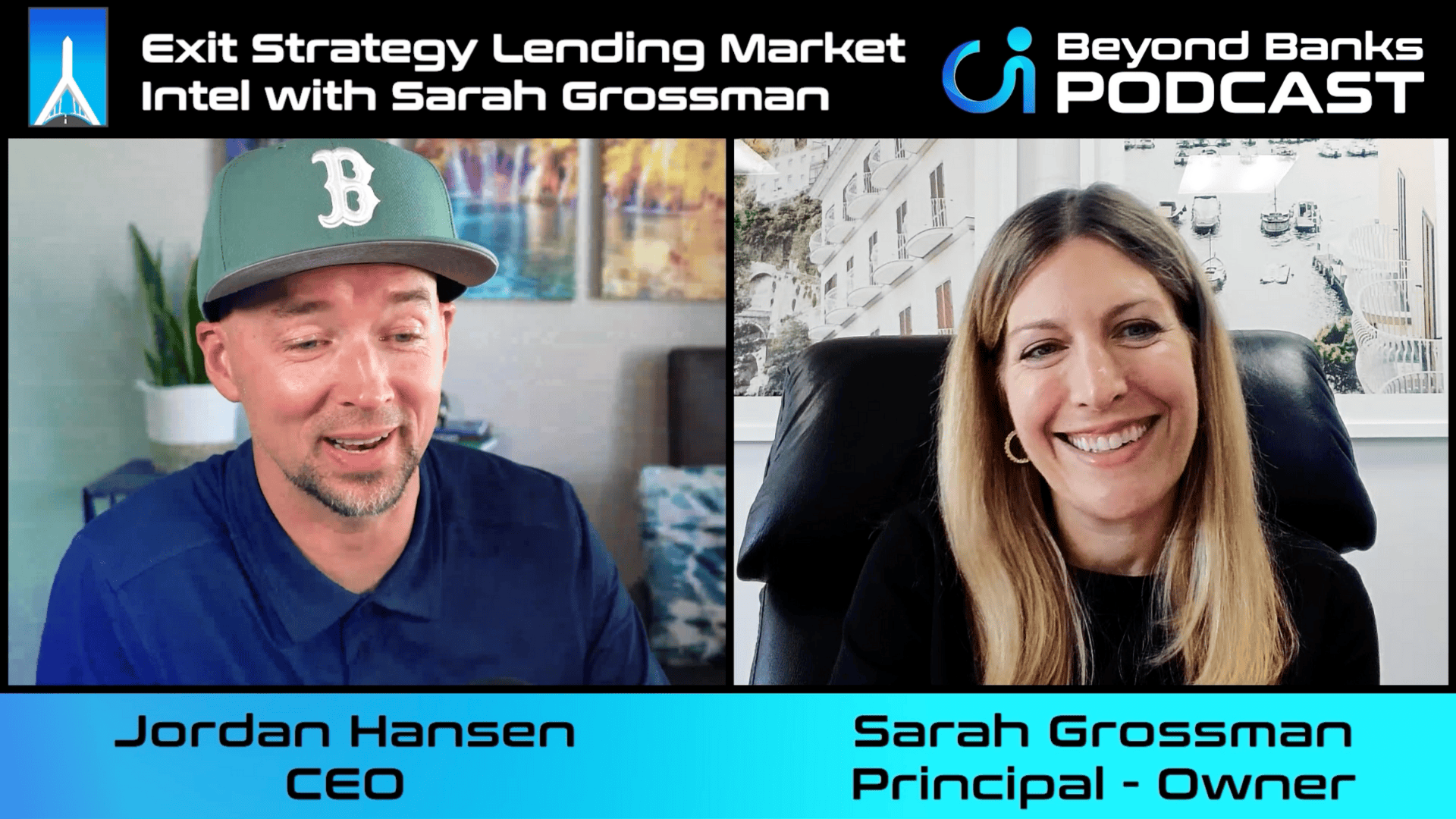
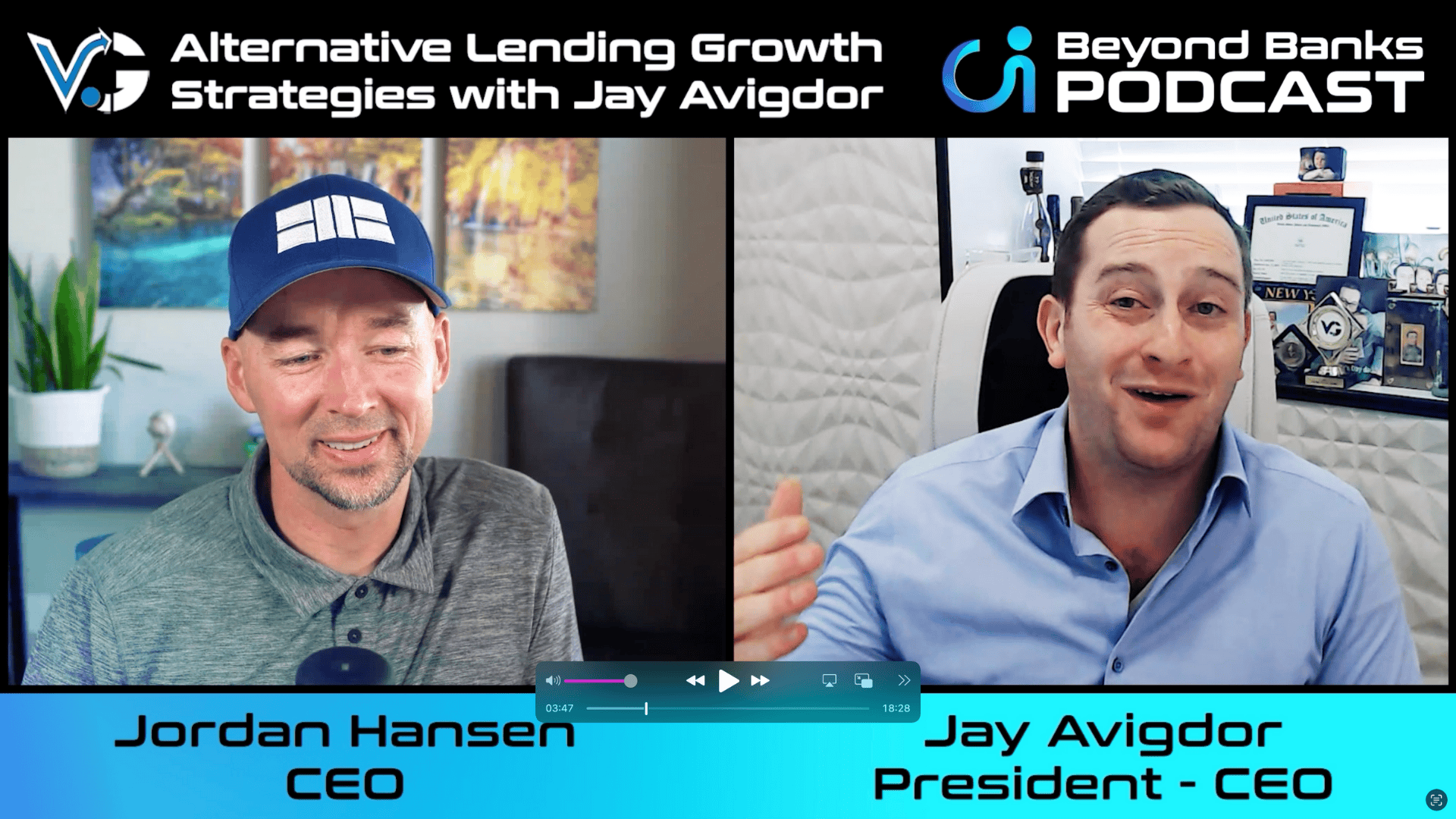
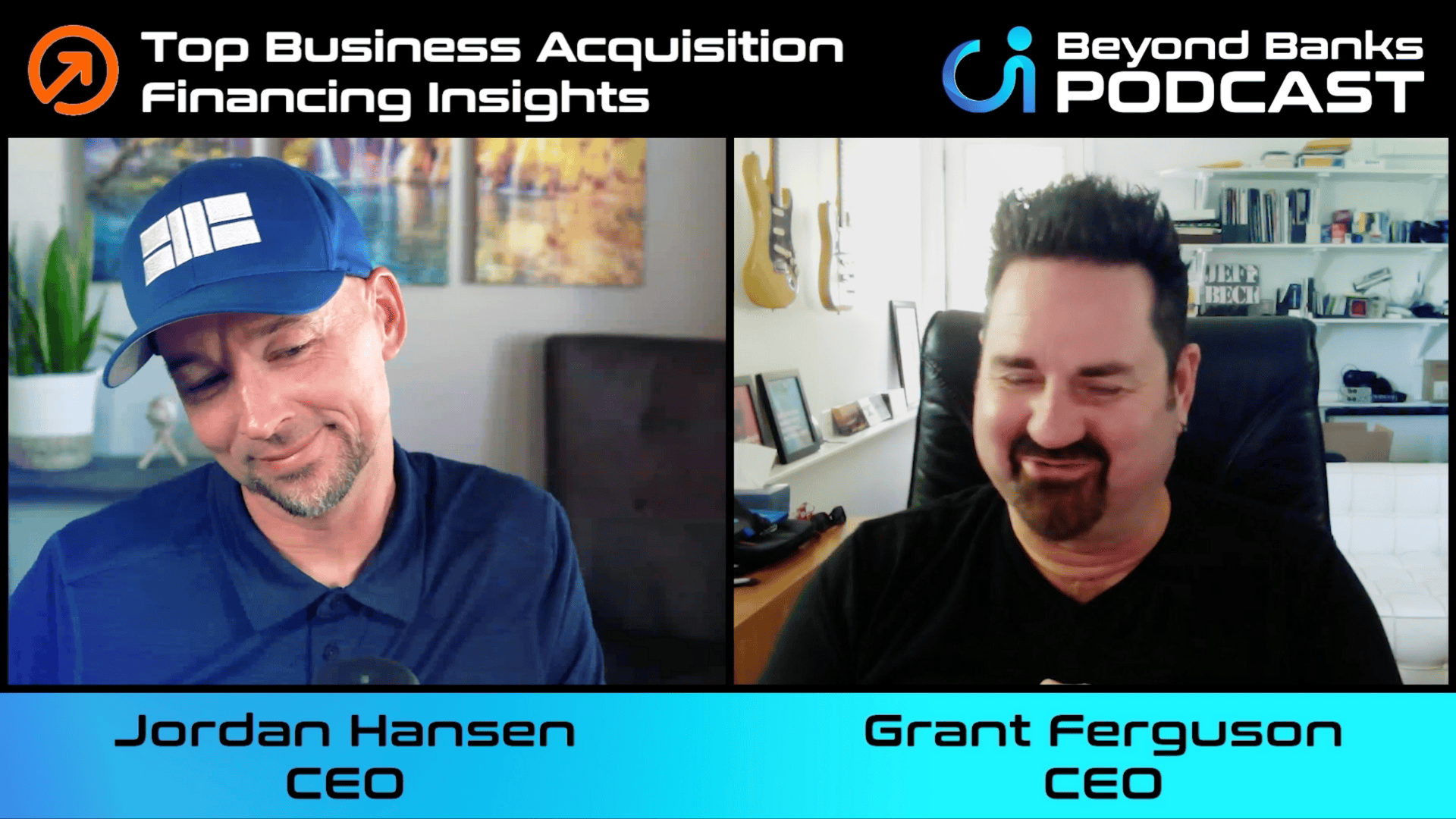


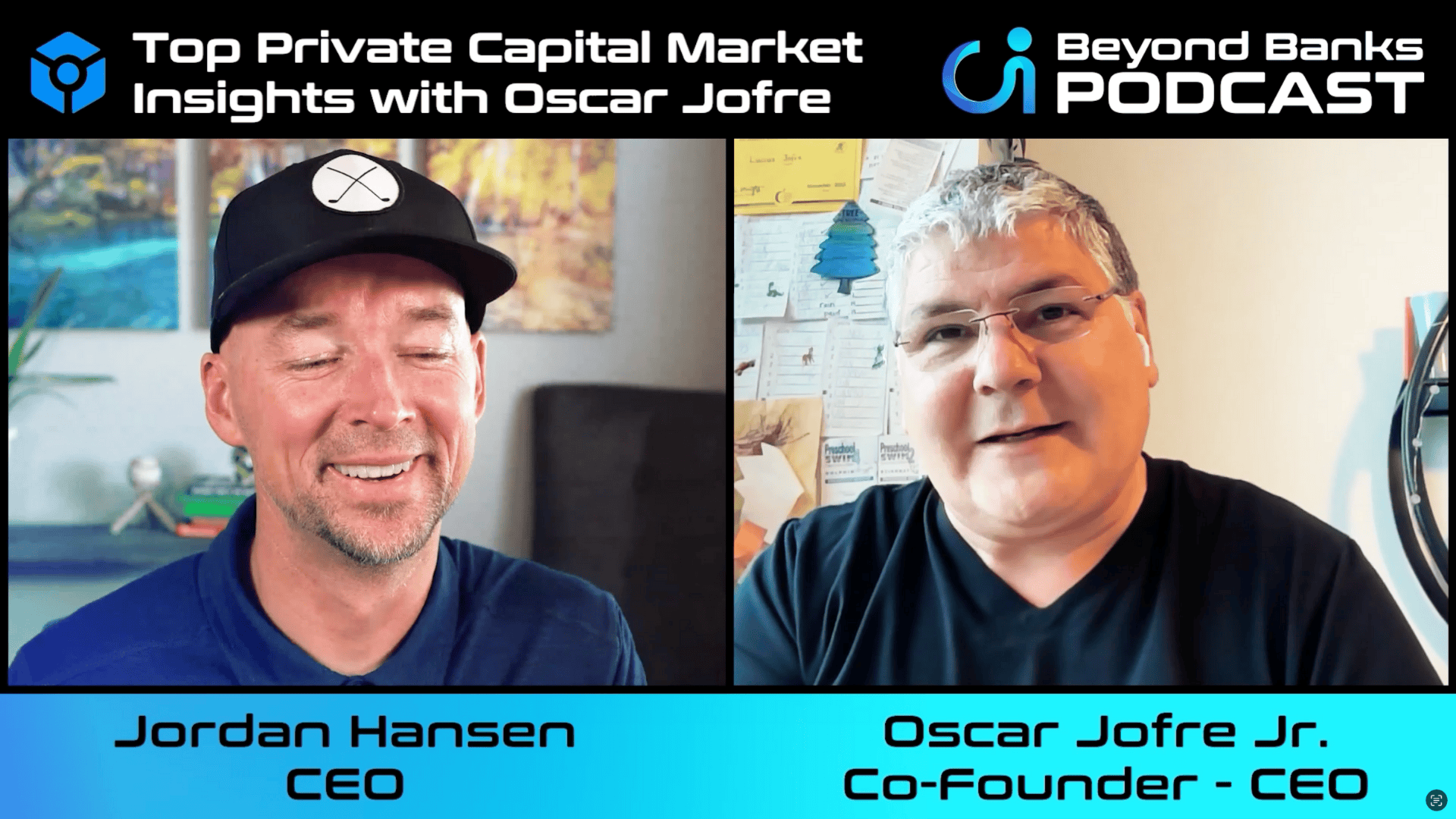

















.png)